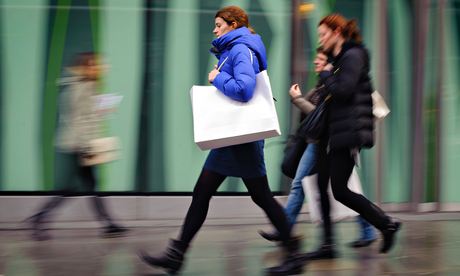
With shoppers relying more on smartphones, tablets and with advances in online shopping, the traditional high street is sometimes portrayed as being in a death spiral. However, technology cuts both ways and connectivity has provided retailers and brand owners with new opportunities to engage.
To find out what's happening at the cutting edge of retail technology, our independent agency Life recently carried out an audit of 16 stores on the high street, focusing on the central London area, looking at how each one was using technology in-store. Here are some of the things we discovered.
The latest technology isn't always best
Start with the shopper need and then implement the most effective solution. Italian design factory Alessi used a simple QR code shopping wall on the window of its store in London's West End to grab the interest of passing people by linking to arresting content. Technology in this case was the enabler, not the end result.
User experience matters
If shoppers can't easily get to the point of transaction, they'll be frustrated and lose interest. Topshop's design-your-own T-shirt concession from printing pioneers Yr showed the importance of a slick and intuitive user interface that makes it easy to create personalised products. It was engaging and offered instant gratification.
Make use of a shopper's own devices
Our personal technology develops quicker than comparable hardware in-store. Leveraging social media to encourage us to share physical experiences with one another is a good way of getting around that fact. Topshop offered a great example of this when it linked up with Pinterest for a Christmas gift guide that encouraged shoppers to pick and share their inspirational gift ideas. Physical "Most pinned item" tags were hung on popular Pinterest picks in-store.
Not everybody wants a sales person in their face
Technology can also engage customers by selling to them. Clinique's fixture in John Lewis features a self-service skin diagnostic terminal promising "90 seconds to great skin" – shoppers are presented with a printout of the results with a list of personal product recommendations. The consumer gets a valuable service with immediate results, while the retailer gets a chance to sell its product. It's a great technological solution for those who prefer not to speak to a consultant.
Don't neglect training
Technology is often only as good as the staff present. Audi City is a multi-sensory experience that allows car buyers to create and interact with virtual vehicles. Serious prospects are ushered downstairs where an experienced sales person takes them through all of the finishing trim options to spec their car. It's a smart combination and as a result sales at the virtual showroom are now among the highest of any Audi dealership.
Consider all five senses
When creating an immersive experience in-store, consider extra sensory elements to communicate with shoppers. Plenty of cosmetics brands are using iPads, but Bobbi Brown's concession in Selfridges offers headphones to browse its online beauty tutorials, making the display more engaging. Extra screens or related sound effects in the environment can increase dwell time and engagement.
Striking a balance
Digital and retail can appear separate, but bringing them together can be hugely effective. Burberry has done just that with a new retail space on Regent Street. Digital features include products that trigger video screens, audio-visual experiences and digital mirrors. Staff use iPads to check stock availability and make orders and fashion shows are streamed live to the store.
It's now all about the omni-channel experience
Omni-channel retailing – joining up the customer experience across all channels, not separating it across individual ones – has to be seamless. Smart brands are looking to re-engineer the experience in a way that puts the shopper at the centre of the equation. Argos for example is ditching its laminated catalogues in new stores for iPads, easy navigation, fast-track collection and free Wi-Fi. But stores remain important, in particular making it easier for shoppers to collect purchases within a few hours of buying online.
Far from hastening the death of the high street, canny retailers are using technology to breathe new life into their offering. Boots recently teamed with Facebook for a 90-minute streamed event featuring style, hair and beauty tips from its Nottingham store. Shoppers could ask beauty experts questions and benefit from related deals in Boots stores.
The warning, however, is that technology is only a great experience when it works, but when it does the opportunities abound. The winners in the future will be those who can build an experience that takes the best from both digital and physical retailing.
Ian Humphris is joint managing director at Life – follow the agency on Twitter @LIFEagency
To get weekly news analysis, job alerts and event notifications direct to your inbox, sign up free for Media Network membership.
All Guardian Media Network content is editorially independent except for pieces labelled 'Advertisement feature'. Find out more here.

